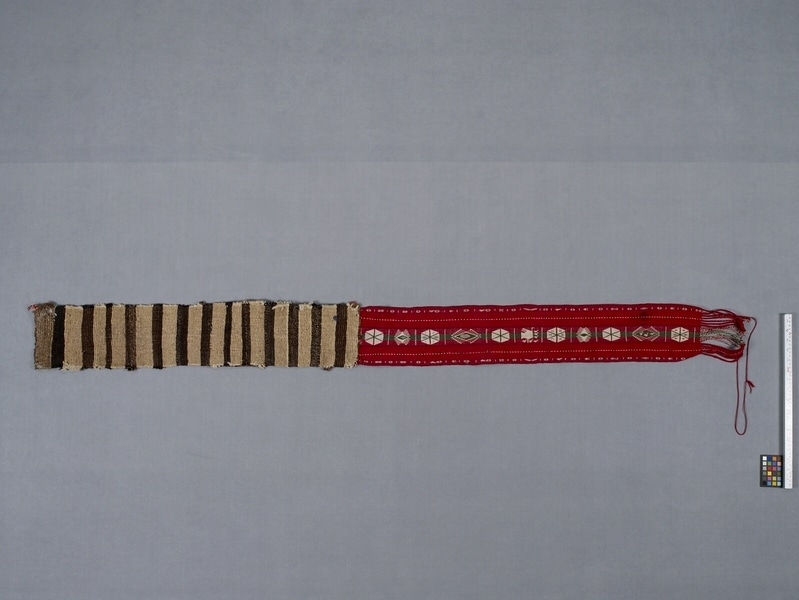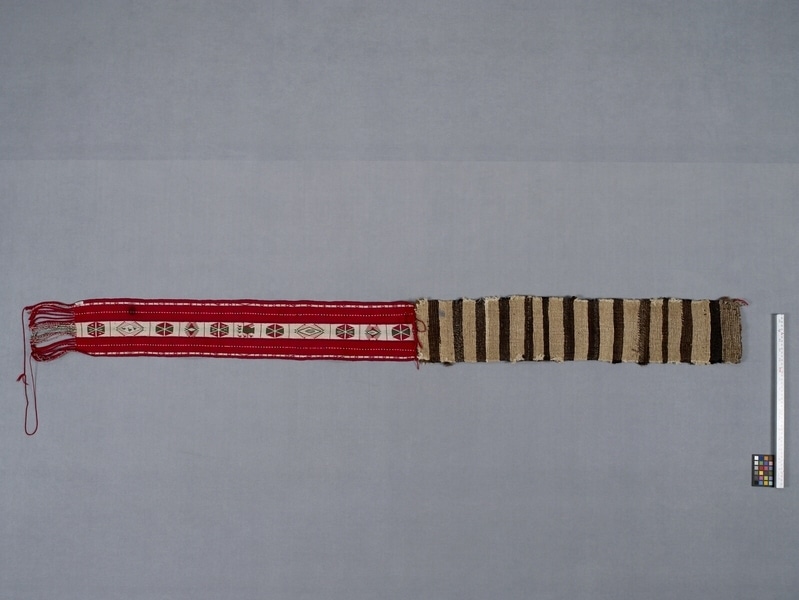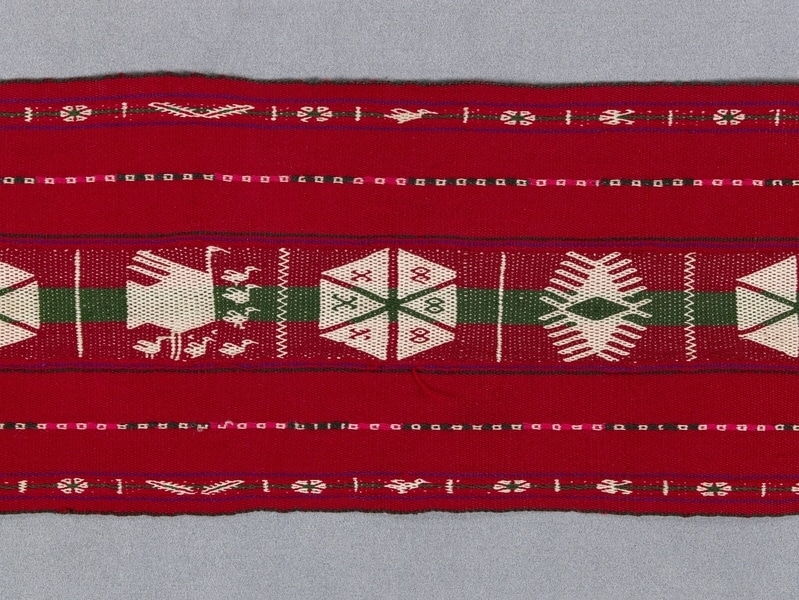Belt Item Number: Sf911 from the MOA: University of British Columbia



Description
Belt composed of two parts: a segment of alternating bands of dark and light brown (underbelt), and a segment of woven red, off-white and green fabric with a central band featuring geometric motifs flanked by narrower bands. The warp ends are braided to form a fringe at one end.
History Of Use
Warp-faced fabrics with three or four selvedges are woven by women but the fabrics the techniques, structures and some of the motifs have pre-Conquest antecedents. This type of textile conveys the most information about an individual's ethnicity, sex, age, status and particular history. Belts are woven for fiestas and life events and so are used by both sexes. Are specific to the occasion. A number of images refer to the wedding.
Narrative
The red belt was woven by Candelaria for her husband Augustin for the occasion of their son Rosendo's marriage approximately 5 years before it was purchased. The underbelt was woven by Augustin for himself approximately 20 years before purchase. Worn on ordinary days for working since the event for which it was woven. Augustin said the belt was identical to one Candelaria wove for herself for the same wedding.
Iconographic Meaning
The range of motifs refers to local geography and landmarks, ecology, fecundity as well as luck. The six part circle refers to the division of land into six sections on Taquile and the rotation of crops and fallow periods. Generally propitious signs for the marrying couple including young and mature animals which express a hope for fertility. The diamonds with attached pennants represent a dance done at the wedding.
Cultural Context
wedding
Specific Techniques
Weave structures are the following: 1-plain colour areas are warp faced plain weave. 2- figurative designs; complementary-warp weave with 3-span floats aligned in alternate pairs with an irregular (abbabaab) warping order (3/1 horizontal colour changes and diagonals of 2-span floats). 3- stripe with squares; float weave derived from turned 2/1 horizontal herringbone with floats forming squares. The underbelt is constructed by weft-wrapping a technique where the weft encircles each warp. It is one of the very few techniques still done on a fixed frame loom in Peru and it is done only by men on Taquile.
Item History
- Made by Candelaria Cruz Machaca (Maker) and Agustin Quispe Mamani (Maker) in Taquile, Puno, Peru during 1962
- Collected by Mary Frame during 1982
- Owned by Mary Frame before February 10, 1983
- Received from Mary Frame (Seller) and Museum of Anthropology Shop Volunteers (Funding source) on February 10, 1983
What
- Name
- Belt
- Identification Number
- Sf911
- Type of Item
- belt
- Material
- synthetic fibre, alpaca wool fibre, wool fibre and dye
- Manufacturing Technique
- respun, woven, plied, sewn, braided, weft-wrapped woven and spun
- Overall
- height 17.0 cm, width 186.0 cm, depth 2.0 cm
Who
- Culture
- Quechua
- Creator
- Candelaria Cruz Machaca (Maker) and Agustin Quispe Mamani (Maker)
- Field Collector
- Mary Frame
- Previous Owner
- Mary Frame
- Received from
- Mary Frame (Seller) and Museum of Anthropology Shop Volunteers (Funding source)
Where
- Holding Institution
- MOA: University of British Columbia
- Made in
- Taquile, Puno, Peru
When
- Creation Date
- during 1962
- Collection Date
- during 1982
- Ownership Date
- before February 10, 1983
- Acquisition Date
- on February 10, 1983
Other
- Item Classes
- textiles
- Condition
- fair
- Accession Number
- 0861/0023